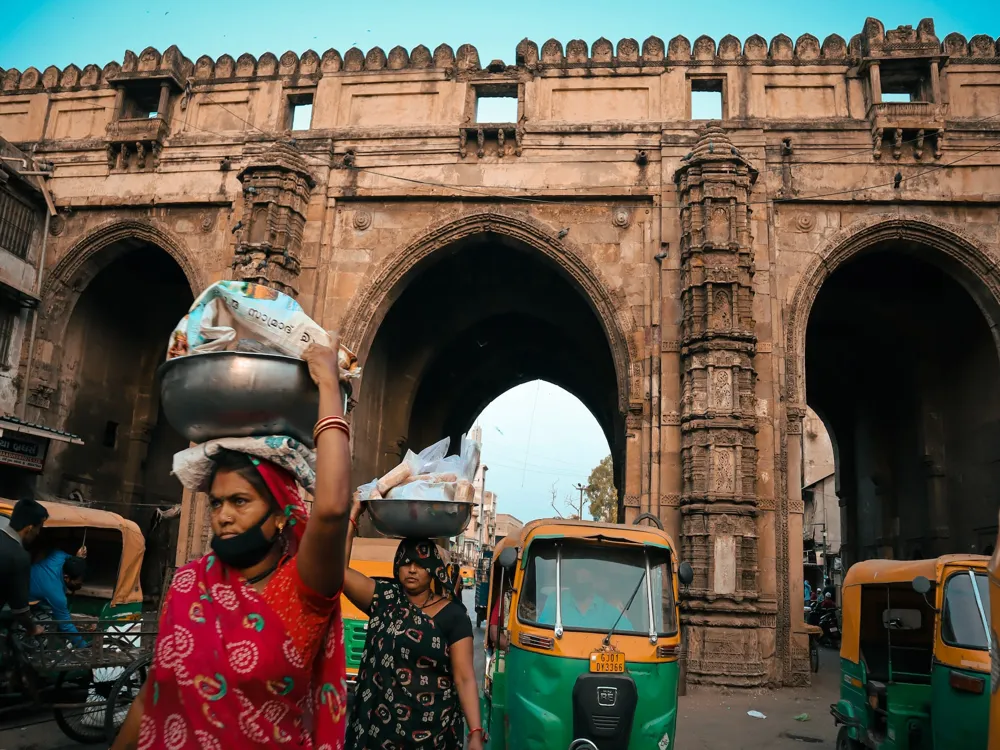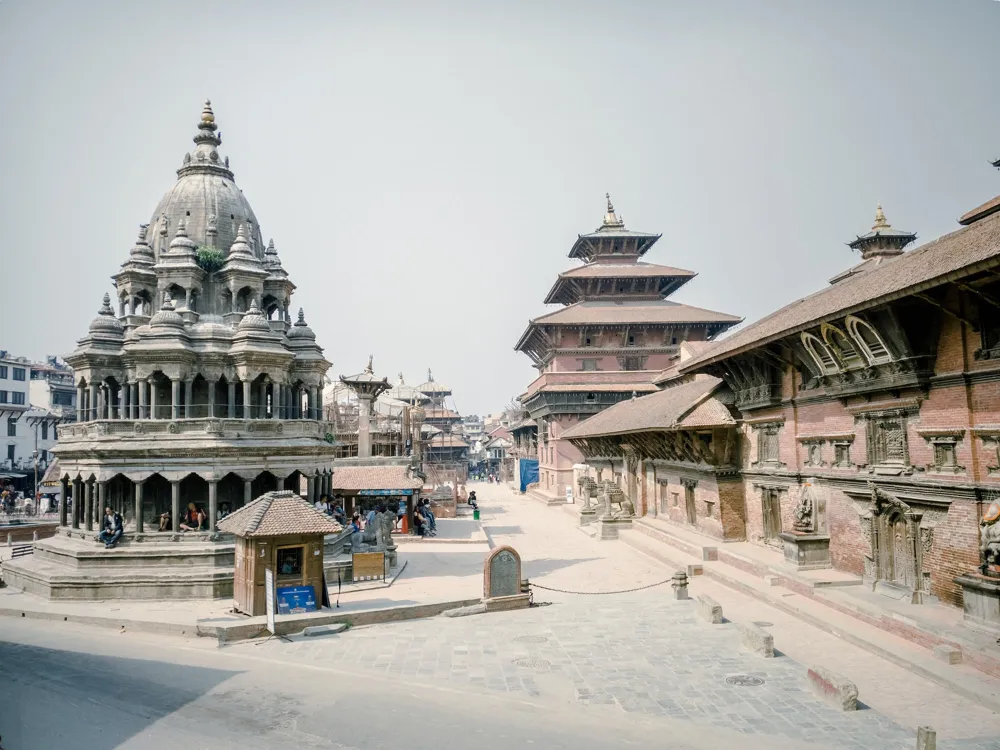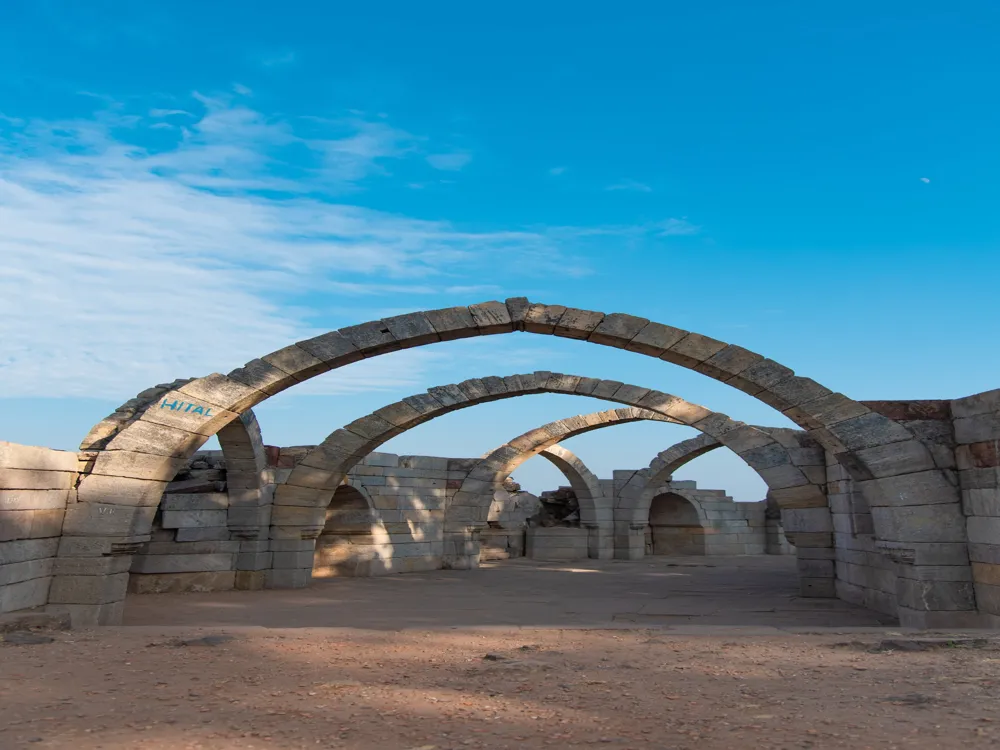Sabarmati Ashram, located in Ahmedabad, Gujarat, is a place of great historical and cultural significance in India. It was one of the residences of Mahatma Gandhi, the father of the Indian independence movement, and served as a pivotal base from where Gandhi led the Dandi March in 1930. The Ashram, set on the tranquil banks of the Sabarmati River, spans an area of approximately 36 acres and remains a symbol of simplicity and peace. This historical site attracts thousands of visitors annually, who come to pay homage to Gandhi and learn about his life and teachings. The Ashram comprises various buildings including Hridaya Kunj, where Gandhi lived, a museum, a library, and an exhibition center, each narrating the profound story of Gandhi's life and his role in India's freedom struggle. The architecture of Sabarmati Ashram is a testament to Gandhi's principles of simplicity and self-sufficiency. The structures within the Ashram are predominantly constructed using local materials and embody traditional Indian architectural styles. The Ashram's layout is simple yet functional, with open spaces and gardens that create a serene environment. The buildings are characterized by their modest design, with minimalistic interiors reflecting Gandhi's ascetic lifestyle. The use of natural light and ventilation in the architecture is noteworthy, promoting an eco-friendly and sustainable way of living. The Ashram's design not only serves its functional purpose but also symbolizes the ethos of the freedom movement led by Gandhi, emphasizing simplicity, unity, and harmony with nature. It's advisable to plan your visit to Sabarmati Ashram. Check the opening hours and any special events or exhibitions that might be happening during your visit. The Ashram is open all days of the week, and there is no entry fee. Visitors are expected to maintain the sanctity of the Ashram. It is a place of historical importance and reverence. Avoid loud conversations and ensure your mobile phones are on silent mode. Consider taking a guided tour to enhance your understanding of the Ashram and Gandhi's life. These tours are often conducted by knowledgeable guides who provide insightful anecdotes and historical context. Photography is allowed in most parts of the Ashram, but always check for any restrictions and respect the privacy of others. It's a great opportunity to capture the serene beauty of the Ashram. As a sign of respect, dress conservatively when visiting the Ashram. Comfortable and modest clothing is recommended, suitable for the local culture and climate. Sabarmati Ashram is well-connected and easily accessible from different parts of Ahmedabad. If you're coming from the Ahmedabad Railway Station or the Airport, you can hire a taxi or take an auto-rickshaw to reach the Ashram. Public buses are also available from various parts of the city. For those driving, there is a parking facility near the Ashram. The Ashram is located around 5 kilometers from the city center, making it a convenient destination for visitors. Read More:Overview of Sabarmati Ashram, Ahmedabad
Architecture of Sabarmati Ashram
Tips When Visiting Sabarmati Ashram
Plan Your Visit
Respect the Sanctity of the Place
Guided Tours
Photography
Dress Appropriately
How To Reach Sabarmati Ashram
Sabarmati Ashram
Ahmedabad
Gujarat
NaN onwards
View ahmedabad Packages
Weather :
Label : Must Visit
Tags : Museum
Timings : 8:30 AM to 6:30 PM
Time Required : 1 - 2 hours
Entry Fee : No entry fee
Planning a Trip? Ask Your Question
Also Refered As:
Gandhi Ashram
Ahmedabad Travel Packages
View All Packages For Ahmedabad
Top Hotel Collections for Ahmedabad

Private Pool

Luxury Hotels

5-Star Hotels

Pet Friendly
Top Hotels Near Ahmedabad
Other Top Ranking Places In Ahmedabad
View All Places To Visit In ahmedabad
Faq on Ahmedabad
What is Sabarmati Ashram in Ahmedabad?
Sabarmati Ashram, located in Ahmedabad, Gujarat, India, is a historic site closely associated with Mahatma Gandhi, the leader of India's non-violent struggle for independence from British rule. It served as Gandhi's residence from 1917 to 1930 and played a pivotal role in India's freedom movement.
What is the significance of Sabarmati Ashram?
Sabarmati Ashram holds immense significance as it was Mahatma Gandhi's primary residence and the nerve center of India's freedom struggle. It served as a place for fostering ideas of non-violence, self-reliance, and simple living, which were central to Gandhi's philosophy and the Indian independence movement.
When was Sabarmati Ashram established?
Sabarmati Ashram was established on June 17, 1917, by Mahatma Gandhi. He set it up as a community living experiment based on principles of self-sufficiency and non-violence.
What are the attractions within Sabarmati Ashram?
Within Sabarmati Ashram, visitors can explore various attractions including Gandhi Smarak Sangrahalaya (Gandhi Museum), Magan Niwas (Gandhi's living quarters), Vinoba-Mira Kutir (huts of Vinoba Bhave and Mirabehn), Upasana Mandir (prayer ground), and Hriday Kunj (the room where Gandhi lived).
Is Sabarmati Ashram open to the public?
Yes, Sabarmati Ashram is open to the public. Visitors can explore the ashram premises, learn about Gandhi's life and teachings through exhibits in the museum, participate in guided tours, and engage in various educational and cultural activities.
View ahmedabad Packages
Weather :
Label : Must Visit
Tags : Museum
Timings : 8:30 AM to 6:30 PM
Time Required : 1 - 2 hours
Entry Fee : No entry fee
Planning a Trip? Ask Your Question
Gandhi Ashram
Ahmedabad Travel Packages
View All Packages For Ahmedabad
Top Hotel Collections for Ahmedabad

Private Pool

Luxury Hotels

5-Star Hotels

Pet Friendly
Top Hotels Near Ahmedabad
Other Top Ranking Places In Ahmedabad
View All Places To Visit In ahmedabadFaq on Ahmedabad
What is Sabarmati Ashram in Ahmedabad?
Sabarmati Ashram, located in Ahmedabad, Gujarat, India, is a historic site closely associated with Mahatma Gandhi, the leader of India's non-violent struggle for independence from British rule. It served as Gandhi's residence from 1917 to 1930 and played a pivotal role in India's freedom movement.
What is the significance of Sabarmati Ashram?
Sabarmati Ashram holds immense significance as it was Mahatma Gandhi's primary residence and the nerve center of India's freedom struggle. It served as a place for fostering ideas of non-violence, self-reliance, and simple living, which were central to Gandhi's philosophy and the Indian independence movement.
When was Sabarmati Ashram established?
Sabarmati Ashram was established on June 17, 1917, by Mahatma Gandhi. He set it up as a community living experiment based on principles of self-sufficiency and non-violence.
What are the attractions within Sabarmati Ashram?
Within Sabarmati Ashram, visitors can explore various attractions including Gandhi Smarak Sangrahalaya (Gandhi Museum), Magan Niwas (Gandhi's living quarters), Vinoba-Mira Kutir (huts of Vinoba Bhave and Mirabehn), Upasana Mandir (prayer ground), and Hriday Kunj (the room where Gandhi lived).
Is Sabarmati Ashram open to the public?
Yes, Sabarmati Ashram is open to the public. Visitors can explore the ashram premises, learn about Gandhi's life and teachings through exhibits in the museum, participate in guided tours, and engage in various educational and cultural activities.






















